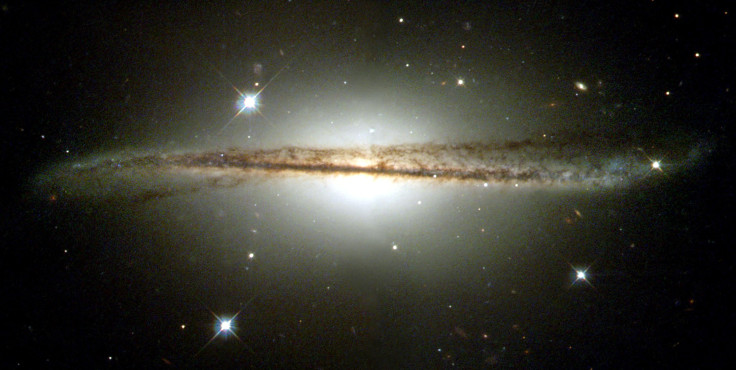Milky Way’s Supermassive Black Hole Has A Cool Gas Ring

A cool disk of interstellar gas surrounds the Milky Way ’s supermassive black hole. The latest findings by the Atacama Large Millimeter/Submillimeter Array (ALMA) shows that the region is filled with stars, interstellar clouds of dust and a large tank of warm and colder gases.
Lena Murchikova, an astrophysicist at the Institute for Advanced Study in Princeton and lead author of a new paper, ‘ A Cool Accretion Disk around the Galactic Centre Black Hole ’, said the contribution of cooler gas to the accretion flow onto the black hole was earlier unknown.
Murchikova said ALMA was able to image atomic emission from the area around the supermassive black hole at smaller scales than they had observed before. “It shows a cool, rotating gas at about 10 thousand Kelvins or 18,000 degrees Fahrenheit,” she said. At this temperature, according to Science Daily, the gas glows fiercely in x-ray light, allowing it to be studied by space-based x-ray telescopes, down to a scale of about a tenth of a light-year from the black hole.
Murchikova described the hot gas as being shaped like a bowling ball, with the cool disk being like a thick wedding ring inside, lying at the middle. “On one side of the disk, the light wavelength was stretched, or redshifted. On the other side, the light was squished or blueshifted. It means that one side of the disk is moving toward Earth and the other is moving away,” she said.
Previous observations highlighted cooler hydrogen gas within a few light years of the black hole. Astronomers describe the galactic-center black hole as "relatively quiet," “The radiation around it is strong enough to cause hydrogen atoms to lose and recombine with their electrons, a process which produces a distinctive millimeter-wavelength signal capable of reaching Earth.
Caltech adviser Sterl Phinney said they are looking forward to future observations. “It may confirm the results and reveal a predicted time-dependence of the disk’s emissions due to the motion of hot stars around the black hole,” Phinney said.
The Science Daily said astronomers have only been able to image the tenuous, hot portion of this flow of accreting gas, which forms a roughly spherical flow and showed no obvious rotation.
© Copyright IBTimes 2024. All rights reserved.





















